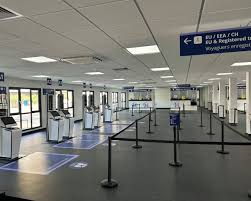New EU Border Security Registration: What You Need to Know

Introduction
The European Union’s latest initiative to bolster border security is the implementation of a new registration system, aimed at enhancing security protocols across member states. This unprecedented move comes in response to increasing concerns over irregular migration and the need for improved monitoring of cross-border movements. The registration system is not only a critical step for national security but also pivotal for the safety and management of EU borders.
Overview of the New Registration System
Announced in late September 2023, the new EU border security registration system will require all travellers entering the Schengen Area to register their details electronically prior to arrival. This system is expected to streamline entry procedures and allow for better tracking of individuals crossing borders, thereby reducing illegal crossings.
The EU Commission has reported that, upon full implementation, the system will include biometric data and will be accessible to border control agencies across EU nations. This will enable authorities to assess potential risks, thereby tightening security protocols. The new system is set to be integrated with existing databases such as the Schengen Information System and European Travel Information and Authorisation System (ETIAS).
Impact on Travellers
For travellers, the new border security registration will necessitate an advance electronic registration, which can be completed online. The process is designed to be straightforward, taking approximately 10 minutes to fill out the required information. However, a fee may apply depending on the traveller’s nationality and the country of entry.
Experts indicate that while this might cause slight delays at the borders initially, it is expected to lead to more efficient processing times in the long run as authorities will have access to pre-collected data. Following the implementation, travellers are urged to complete their registrations at least 48 hours prior to travel to avoid inconvenience.
Conclusion
The new EU border security registration system represents a significant advancement in the EU’s efforts to enhance border management and security. As the system rolls out across member states in the coming months, its success will depend on the seamless integration with existing systems and the cooperation of both authorities and travellers. Analysts predict that if successful, the initiative could serve as a model for other regions facing similar challenges in border security. As discussions on migration and security continue to evolve worldwide, this move by the EU will be closely monitored and may inform future policies in different jurisdictions.







